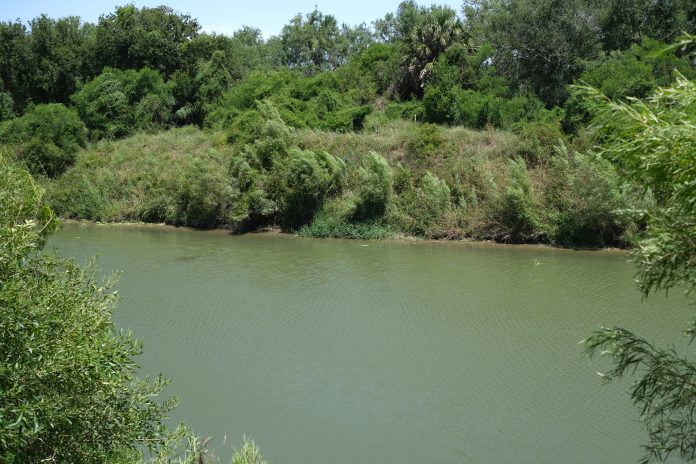
The tropical storm that wasn’t dissipated Saturday evening without much issue, but more rainy weather could be coming later this week.
On Friday, the National Hurricane Center forecast a tropical wave just off the coast of Mexico had the potential to become named storm Danielle, issuing a tropical storm warning from the mouth of the Rio Grande to Port Mansfield.
But strong wind shear and the tropical wave’s proximity to land made the forecast a tricky one, meteorologists say, and it broke up without leaving much of a legacy.
“Nothing at all” in the way of damages was reported, Tom Hushen, emergency management coordinator for Cameron County, said Sunday.
“We were kind of caught off-guard there for a little while, but sometimes that happens,” Brian Mejia, a meteorologist with the National Weather Service in Brownsville, said Sunday. “The system kind of entered into some little more unfavorable conditions for development of a tropical system than we actually thought. That was the reason for the lack of intensification.”
The complicating factors were, Mejia said, its proximity to the mainland and a northerly upper-level shear that were “choking up” the storm.
“On Friday morning it looked pretty good and at the time it was in a really favorable area, a favorable position, which is why the hurricane center sent out the plane and upgraded it to a potential tropical cyclone,” Mejia said.
“The models were still kind of hesitant, or not hesitant, but a little skeptical, about whether or not this would develop into a system,” he added. “It was a very tough storm to forecast, all in all.”
This week could bring even more rain, as temperatures range from the low 90s along the coast to more than 100 higher up the Valley. The chances of thunderstorms are 20 to 30 percent Wednesday through Friday.
“The chances aren’t the greatest but they’re there,” Mejia said. “… I think the better chances remain to our north, up-state.”
On Saturday, Gov. Greg Abbott held a statewide weather call with more than 350 emergency response officials about not just the tropical threat, but also severe storms forecast from the Texas Panhandle through north Texas early this week.
He said he spoke directly with county judges Eddie Treviño Jr. of Cameron County and Richard Cortez of Hidalgo County.
“I urge Texans to remain alert about changing weather conditions, take the active weather threats seriously, and heed the guidance of local officials as storms bringing rain and flood concerns push through our state,” Abbott said.
This week thunderstorms are forecast for almost the entire state, with the exception of the top tip of the Texas Panhandle. The most severe are likely to be felt in North Texas, as well as in southern Oklahoma, northern Louisiana and southwest Arkansas.
Although the Valley missed out on any rainfall from the tropical disturbance that dissolved Saturday evening, there was good news from the other tropical disturbance that brought rain to South Texas the weekend before.
Mejia said San Benito received five to seven inches of rain, Harlingen’s airport received two-plus inches, Brownsville’s airport had 1.55 inches and McAllen’s airport had two to four inches. Some localized spots had more rain than the official sites.
Most importantly, a lot of rain also fell in northern Mexico, where the most important rivers feed the two reservoirs that provide water to both sides of the Valley.
For the first time in a year, both Falcon and Amistad reservoirs actually rose, with Falcon up 3.0 feet between Aug. 14 and Aug. 21, and Amistad up 3.82 feet over the same period.
Falcon went from just 9.4 percent capacity to 11.6 percent. A year ago, it was 24.6 percent full.
Amistad rose from 30.3 percent full to 33.3 percent of capacity. A year ago, it was 52.9 percent full.
“Definitely a positive change to see the levels there on the reservoirs,” Mejia said. “It was in fact not a named, or was declared a potential tropical storm or tropical storm, but it produced a lot of rainfall. … Obviously we need a little more so we can get back to regular levels, but it did help us tremendously, and we can breathe a sigh of relief, at least for now.”
RELATED READING:
Hitting a low point: Drought, treaty noncompliance continue to stress RGV water supply



